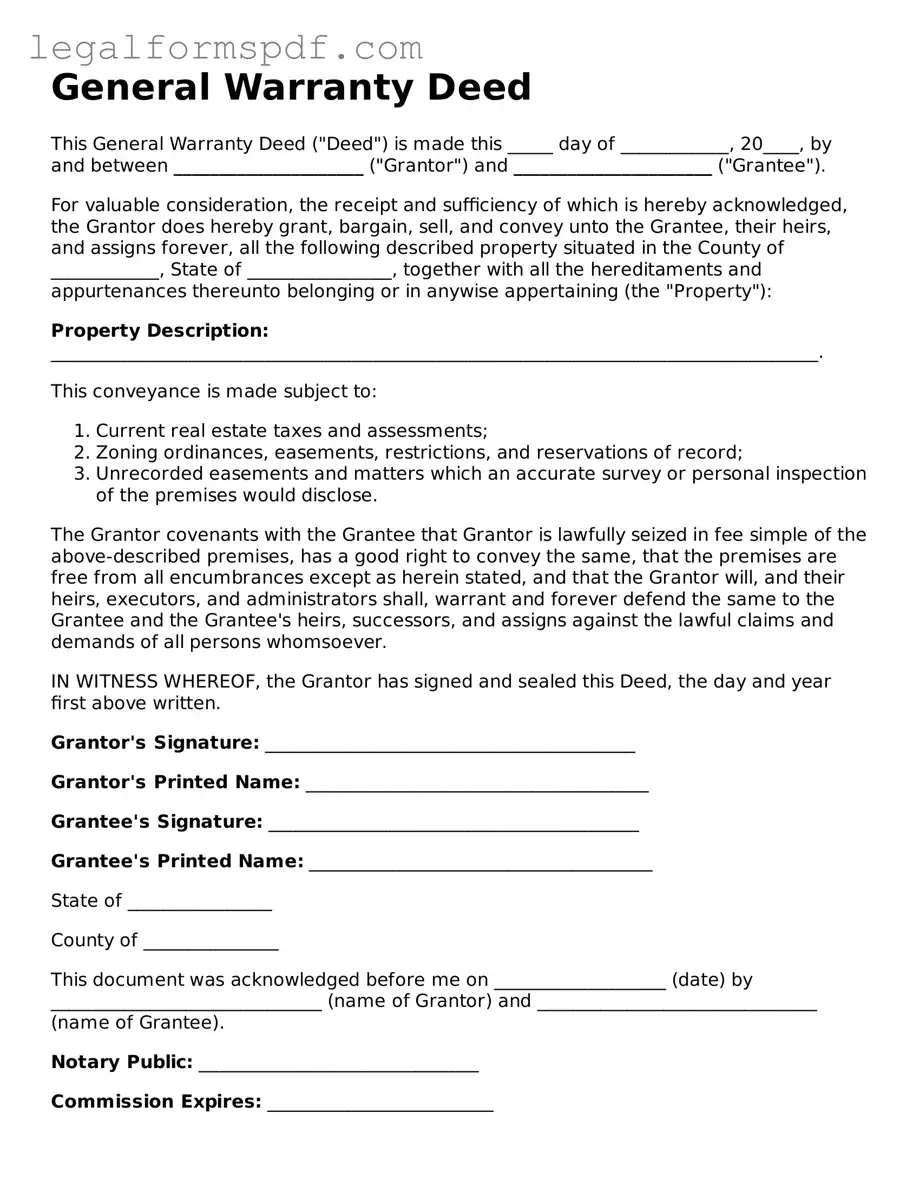What is a deed form?
A deed form is a legal document that signifies the transfer of ownership of real property from one party, known as the grantor, to another, known as the grantee. It contains details about the property being transferred, the identities of both the grantor and the grantee, and must be signed by the grantor to be effective.
Are there different types of deed forms?
Yes, there are several types of deed forms, each serving a different purpose. The most common ones include the warranty deed, which provides the grantee with the highest level of protection; the quitclaim deed, which transfers only the grantor's interest in the property without any warranties of clear title; and the special warranty deed, which limits the warranty provided by the grantor to the period during which they owned the property.
Why is a deed form important?
A deed form is crucial because it legally formalizes the transfer of property rights. Without a properly executed deed, the transfer of real estate ownership might not be recognized by law, endangering the grantee's title and rights to the property. This document is also important for recording purposes, as it provides a public record of property ownership changes.
What details are included in a deed form?
A typical deed form includes the legal description of the property, the names and signatures of the grantor(s) and grantee(s), the date of the transfer, and a statement of consideration, which is the value exchanged for the property. Some deeds might also include warranty clauses or, in the case of a quitclaim deed, a statement that the transfer is made without warranties.
Is a deed form required to be notarized?
Most jurisdictions require that a deed form be notarized to verify the identity of the signing parties and to acknowledge that the signatures were made willingly and under no duress. Notarization helps in preventing fraud and adds a layer of security to the transfer process. Upon notarization, the deed form is usually ready to be filed with the local county recorder's office.
How does one obtain a deed form?
Deed forms can be obtained from several sources, including online legal document services, local real estate agents, or an attorney's office. It's important to ensure that the form complies with the legal requirements of the jurisdiction where the property is located. For this reason, consulting with a real estate attorney can be a reliable way to obtain an appropriate deed form.
What happens after a deed form is signed and notarized?
After a deed form is signed and notarized, it should be filed with the county recorder's or land registry office in the county where the property is located. This step, known as recording, makes the document part of the public record. Recording the deed is essential for protecting the grantee's interests, as it provides notice to the public of the grantee's rightful ownership of the property.
Can a deed form be changed or revoked once it's executed?
After a deed form is fully executed – meaning it has been signed, notarized, and recorded – it cannot be changed or revoked unilaterally. Any modification to the terms or to the property's ownership would require a new deed to be executed and recorded, reflecting the current intentions of the parties involved. In cases where one party wishes to change the deed without the other's agreement, legal action may be required.
Are there any specific considerations for filling out a deed form?
When filling out a deed form, accuracy is paramount. A mistake in the legal description of the property or in the names of the parties can lead to disputes or could invalidate the deed. It's also important to use the correct deed type for the transaction's needs and to understand the implications of the warranties being made or disclaimed. Because of these complexities, consulting with a professional, such as a real estate attorney, is often recommended to ensure that the deed is properly executed and meets legal requirements.
